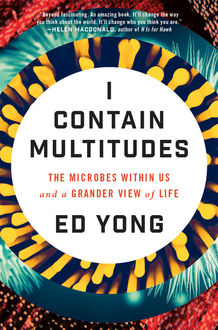I Contain Multitudes
Buku ini saat ini tidak tersedia
515 halaman cetak
- Tahun publikasi
- 2016
Kesan
- David Estrada1membagikan kesan4 tahun yang lalu🎯Bermanfaat
bello
Kutipan
- Daniela Orozcomembuat kutipan4 tahun yang laluEven when we are alone, we are never alone. We exist in symbiosis
- b8453453735membuat kutipan3 tahun yang laluMicrobes have opened many doors for animals, allowing them to take up all kinds of peculiar lifestyles that would normally be closed off to them. And when animals share habits, their microbiomes often converge. For example, Knight and his colleagues once showed that ant-eating mammals, including pangolins, armadillos, anteaters, aardvarks, and aardwolves (a type of hyena), all have similar gut microbes, even though they have been evolving independently for around 100 million years
- b8453453735membuat kutipan3 tahun yang laluEvery organ is also variable in itself. The microbes that live at the start of the small intestine are very different from those in the rectum. Those in dental plaque vary above and below the gum-line. On the skin, microbes in the oily lakes of the face and chest differ from those in the hot and humid jungles of the groin and armpit, or those colonising the dry deserts of the forearms and palms. Speaking of palms, your right hand shares just a sixth of its microbial species with your left hand
fb2epub
Seret dan letakkan file Anda
(maksimal 5 sekaligus)


